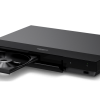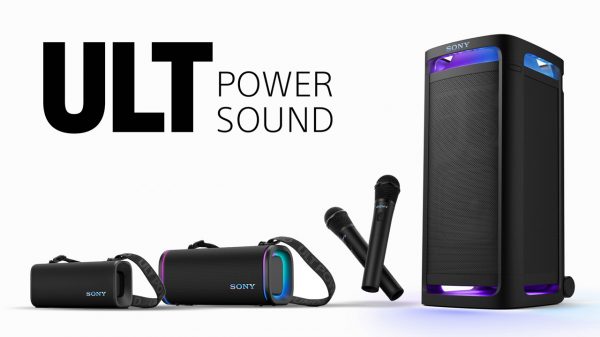In our reference article “WTF is HDR?” we explained how High Dynamic Range enables TVs, displays, and projectors to reproduce a wider range of color, contrast, and brightness than devices without this capability. Video content and display devices without HDR capabilities are referred to as SDR (Standard Dynamic Range).
There are two general types of HDR in use today: Static and Dynamic. HDR10+ is an example of dynamic HDR, but first let’s explain the difference.
Static HDR
HDR10 is an example of static HDR. This means that the HDR processing or encoding is applied equally throughout a piece of content – an entire movie or TV episode. During the mastering process, the brightest point and darkest point in a movie are marked, so when the HDR content is played back, all the other brightness levels are indexed to those reference points. All HDR-enabled devices are compatible with HDR10.
Dynamic HDR
Although HDR10 provides a baseline for expanded dynamic range, there are other HDR formats that provide greater precision by employing dynamic HDR. Dynamic HDR allows scene-by-scene or frame-by-frame variation. This means what you see is based on the brightness levels present at a given reference point, such as a frame or scene, rather than limited to the maximum brightness level for the entire film. This gives film-makers and mastering professionals the ability to provide improved detail, dynamic range and color reproduction based on the needs of each specific scene.
Examples of Dynamic HDR include HDR10+, Dolby Vision, HLG, and Technicolor HDR.
In this article, we will discuss the HDR10+ format. For details on Dolby Vision, refer to our article WTF is Dolby Vision? And for details on HLG see WTF is HLG (Hybrid Log Gamma)?
HDR10+ – How It’s Different from HDR10
Building on the foundation of HDR10, HDR10+ takes things further with its dynamic characteristics and is a direct rival to Dolby Vision. While HDR10 uses fixed HDR values that are based on the brightest and darkest points in an entire movie or TV show, HDR10+ allows movie makers and mastering engineers to adjust the high dynamic range values on a scene by scene, or even frame by frame basis. This allows these film-makers to preserve specular highlights in bright scenes while also maintaining fine shadow detail in dark scenes.
Differences Between HDR10+ and Dolby Vision
While both Dolby Vision and HDR10+ both achieve the same goal – better reproduction of HDR content on consumer displays – they do it in slightly different ways. Dolby Vision has multiple profiles which can be used by content creators (mastering professionals) allowing them a bit finer control over how a display will map the dynamic HDR content to its specific brightness capabilities. Also, Dolby Vision supports up to 12-bit color depth (compared to HDR10+ which is limited to 10 bits). Theoretically this 12-bit processing can expand the color gamut and provide more accurate colors. However, as of early 2025, consumer displays are still limited to 10 bit processing.
Although Dolby Vision gets most of the hype, the success of HDR10+ revolves around the fact that, just like HDR10, it is royalty-free. This means hardware makers, studios and streaming services can implement HDR10+ at no additional cost, while companies that include Dolby Vision capability in their products or content have to pay Dolby a license fee for the use of the format.
Samsung (as one of the co-developers of HDR10+ along with Panasonic and 20th Century Fox), includes HDR10+ on their products but does not feature Dolby Vision in any of their TVs, monitors, or projectors. The assumption is that they do this to avoid licensing fees.
In addition to Samsung, companies that provide HDR10+ in their products include Hisense, Panasonic, TCL, TPVision (Philips), and Vizio. This means that HDR10+ is available in close to 80% of the 4K (UHD) TVs on the market.
Additionally, some of these brands also include the Dolby Vision option on some or all of their TVs. Panasonic, TCL and Hisense are examples of TVs which include support for both HDR10+ and Dolby Vision.
As of February, 2025, the two major holdouts for HDR10+ support in the TV market are currently LG and Sony. These two companies appear to remain committed to supporting Dolby Vision instead of HDR10+ for dynamic HDR. If this changes, we’ll be sure to update this article.
HDR10+ from Source to Display
To experience HDR10+ (just as with Dolby Vision or other HDR formats), your source or playback device has to be compatible and the video content itself needs to be encoded with the HDR10+ metadata. In addition to some titles on UHD Blu-ray Disc, HDR10+ is available on many streaming services, including Disney+, Amazon Prime Video, Google TV, Megogo, Paramount+, Rakuten, and YouTube.
As far as studio support, you can find select 4K movies and TV show titles encoded in HDR10+ being released from 20th Century Studios (now a part of Disney), IMAX, Lionsgate, Paramount Pictures, Universal, ViacomCBS and Warner Brothers.
Source components that support HDR10+ include select streaming devices from Roku, Amazon FireTV and Chromecast with Google TV. Compatible mobile devices include phones and tablets from Motorola Mobility, OnePlus, Oppo, RealMe, Samsung, Vivo and Xiaomi.
If you’re looking for a Blu-ray Player that supports HDR10+, you can find select models from Panasonic, Pioneer, Samsung and Magnetar, though some companies, including Samsung, are no longer making or selling Blu-ray Disc players.
For passthrough support of HDR10+ on AVRs (audio/video receivers), you can find select models from Denon, Marantz and Onkyo that will pass that HDR10+ signal through from a compatible source device to a compatible TV. Note that if your specific model of AV receiver does not support HDR10+ passthrough, you can always connect your disc player or streaming device directly to your HDR10+-compatible display – or use the streaming service built into that TV – and then use the display’s eARC HDMI port to pass the sound to your receiver.
Several chip makers support HDR10+ including Amlogic, MediaTek, Qualcomm and Realtek. These are the chips you’ll find in compatible displays and playback devices.
HDR10+ Adaptive
A tweak of the HDR10+ called HDR10+ Adaptive adjusts the viewing experience of HDR10+ content in relation to a room’s lighting conditions. The TV uses an ambient light sensor to detect room lighting levels and adjusts the scale of the brightness values in the HDR10+ content to be optimized for the room’s lighting conditions. This is similar to the Dolby Vision IQ format.
However, there are minor differences. Dolby Vision IQ can identify the HDR content genre and switch to an appropriate preset to better adjust the picture quality. It can also pick a suitable color temperature based on the scene content. HDR10+ Adaptive doesn’t include those adjustment options.
Also, while HDR10, Dolby Vision and HDR10+ can support brightness values up to 10,000 nits in their metadata, this peak brightness level exceeds the capability of current consumer displays. In practice, most HDR content is mastered for a peak brightness level of 1,000 nits or 4,000 nits. To map these HDR values to an individual TV’s actual peak brightness levels, TVs and projectors use a technique called HDR Tone Mapping. The dynamic metadata contained in HDR10+ and Dolby Vision content can help compatible displays to perform tone mapping more effectively than they do with static HDR content.
HDR10/10+ vs Dolby Vision at a Glance
| Peak Brightness (Nits) | Metadata Implementation | Color Depth | Added Features | License Requirement for Device/Content Implementation | |
| HDR10 | 10,000 | Static | 10-bit | None | License Free |
| HDR10+ | 10,000 | Dynamic | 10-bit | Adaptive | License Free |
| Dolby Vision | 10,000 | Dynamic | 12-bit | IQ | License Fee is charged |
HDR10+ Additional Market Penetration
Gaming: The HDR10+ LLC announced last year (2024) an HDR10+ GAMING plug-in for Unreal Engine, which maximizes high dynamic range display output and brightness level, without the need for any manual set-up. Electronic Arts recently released Dragon Age: The Veilguard, their first game title to offer HDR10+ GAMING functionality. Nearly three dozen products powered by Intel integrated or discrete GPUs have been certified for HDR10+, which will provide game enthusiasts with more HDR options
NextGen TV (ATSC 3.0): At CES 2025, it was revealed the HDR10+ was being used within the NextGen TV broadcast platform. NBC4 in NYC is currently using HDR10+ as part of their broadcast options. Gray Media, which has launched the NextGen TV service in 30 markets, is using HDR10+ to upconvert its programming to HDR10+. Gray is also in the process of implementing HDR10+ on its Fox affiliates, including WVUE-TV in New Orleans, the flagship home of Super Bowl LIX.
Inflight Movies and Automotive Display: Panasonic Avionics has certified their latest in-flight entertainment displays for HDR10+. This allows commercial airlines to provide an enhanced viewing experience for passengers. HDR10+ has also been updated to support automotive displays, for use in passenger and/or rear seat infotainment systems.
According to Makoto Morise, co-manager of HDR10+ Technologies, LLC, “All of these new content-rich and experiential HDR10+ applications offer the industry a host of exciting new opportunities and entertainment enthusiasts with more choices than ever”
Bill Mandel, co-manager of HDR10+ Technologies, LLC had this to add: “HDR10+ is supported by a number of leading TV manufacturers who represent nearly 80 percent of the total global market. This technology is also found on the most popular media players and dongles and works on a variety of content as well, including movies and episodic television, video games, packaged media, live events, in-flight entertainment, and NextGen TV (ATSC 3.0) broadcasts”.
The Bottom Line
Introduced as a license-free alternative to Dolby Vision dynamic HDR, HDR10+ appears to be gaining support across studios, streaming services and hardware manufacturers. While Dolby Vision still retains higher market share among studios and actual content, HDR10+ provide a viable alternative, without the expense of licensing fees.
Related Reading
Newcomer Valerion Stirs The Lifestyle Projector Pot with VisionMaster Max at CES 2025
TCL’s QM6K TV Series Might Become A Big Headache for LG and Samsung: CES 2025
Leica’s Cine Play 1 Might Be the Coolest Portable Projector, But Pricey
BenQ V5000i 4K UST Projector Offers 2500 Lumens, HDR10+, Triple Laser Lighting
WTF is HLG (Hybrid Log Gamma) HDR?


















































